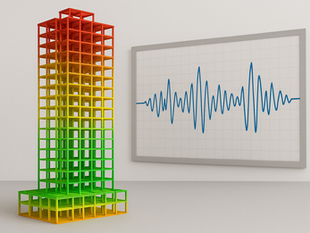
The Role of Towers in Modern Cities: More Than Just Buildings
6
64
0
Towers have always been a defining feature of city landscapes, symbolizing growth, progress, and ambition. But their significance extends far beyond their height. In the context of today’s urban challenges—such as limited space, environmental sustainability, and increasing population—towers play a pivotal role in shaping the future of cities. Here’s a closer look at how towers go beyond being just structures, influencing cities on multiple levels.

1. Elevating the Urban Aesthetic
Towers don’t just blend into a city’s skyline; they often become its most recognizable feature. Think of London’s Shard or the Gherkin—iconic structures that aren’t just part of the skyline but act as landmarks that define the city itself. Towers elevate the identity of a city, creating visual focal points that symbolize its architectural evolution and urban culture.
These structures can be designed to reflect a city’s heritage while incorporating modern elements. Through innovative architecture, towers not only enhance the visual appeal but also add to the city’s character, acting as symbols of technological advancement and cultural significance.
2. Addressing Urban Density
In rapidly growing cities, horizontal expansion is not always feasible. Towers present an ideal solution by allowing urban spaces to expand vertically. This vertical growth provides more living, working, and recreational spaces within the same footprint, optimizing land use in high-demand areas.
Mixed-use towers, which combine residential, commercial, and retail spaces, maximize the efficiency of urban centers. By clustering different uses into one building, cities can reduce the need for lengthy commutes, promote walkability, and foster the development of self-sufficient, vibrant communities within these towering structures.
3. Attracting Economic Opportunities
The presence of prominent towers often attracts global businesses and corporations to set up headquarters or regional offices, leading to significant economic benefits for cities. Towering office spaces not only offer prime real estate but also symbolize a city’s business-friendly environment, helping to draw investors and entrepreneurs.
As companies gravitate toward these hubs, they bring jobs and opportunities that stimulate the local economy. Towers, particularly those in business districts, become catalysts for economic growth by attracting financial institutions, hospitality venues, and service providers, which further boosts the surrounding community.
4. Promoting Social Interaction and Cultural Experiences
While towers are often associated with business and residential uses, they also have the potential to become social and cultural hubs. Modern towers frequently include public spaces, event venues, or cultural attractions like museums and observation decks. These elements bring people together, offering opportunities for interaction and shared experiences.
Towers with public viewing platforms or rooftop gardens give residents and visitors alike the chance to enjoy breathtaking views and engage with the city from new perspectives. These spaces not only enhance the quality of urban life but also create memorable cultural experiences that foster community pride and connectivity.
5. Advancing Sustainable Urban Solutions
As urban areas face growing environmental challenges, towers are becoming key players in driving sustainable design practices. Modern towers are now being equipped with energy-efficient systems, smart technologies, and green building materials that minimize their environmental impact. From solar panels to rainwater harvesting systems and green roofs, these structures are rethinking how buildings interact with the environment.
Incorporating these eco-friendly solutions allows towers to reduce energy consumption, lower carbon footprints, and contribute to a city’s overall sustainability goals. As towers become more sustainable, they pave the way for cities to embrace greener, more resilient development strategies.
6. Improving Urban Mobility and Connectivity
Towers situated near key transportation hubs play an integral role in improving urban mobility. Skyscrapers built close to train stations, metro lines, or bus terminals provide easy access to public transport, making daily commuting more efficient for residents and employees alike.
Incorporating smart technologies within these towers further enhances connectivity, with features like real-time traffic updates, automated building systems, and even electric vehicle charging stations. These elements not only improve urban living but also reduce congestion and pollution, making cities more livable.
7. Shaping the Future of Vertical Living
The concept of vertical living is rapidly gaining traction, particularly in high-density urban areas. Towers are becoming home to thousands of city dwellers, offering not just residential spaces but complete environments where people can live, work, and socialize in one place. These buildings are often equipped with communal spaces, fitness centers, coworking areas, and leisure facilities, all designed to foster community and convenience.
With the integration of smart home technologies and eco-friendly amenities, towers are shaping the future of urban living. They offer a lifestyle where technology, sustainability, and connectivity are at the forefront, providing a glimpse into the future of city living.
Conclusion: Towers as Urban Game-Changers
Towers are far more than just impressive feats of engineering. They are dynamic components of urban life, reshaping how cities function, interact, and grow. From addressing spatial constraints to boosting economic opportunities, fostering social interaction, and leading the charge in sustainability, towers are crucial to the future of modern cities.
As we move toward an increasingly urbanized world, towers will continue to be at the heart of city planning, offering solutions to some of the most pressing challenges faced by urban environments today. In doing so, they will not only help cities grow taller but also smarter, greener, and more connected.






